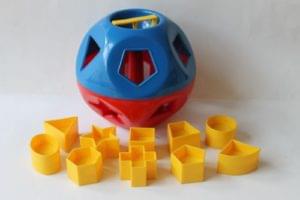Why Consistent Language Matters
Key Takeaways
- Consistent language usage in product interfaces, help pages, emails, and other materials aids in user understanding and anticipation, making it easier for users to engage with the product or service.
- Using standard phrasing for repeated instructions or advice saves users time and reduces frustration, as they only need to learn the phrase or instruction once and can skim over it in future instances.
- Consistent calls to action, especially in system emails, ensure that users only need to read the information once to know that it provides access to help, fostering an expectation that aid is always available at the end of any email.
We’ve talked a lot about using consistent language in your app or product interfaces, and in the help pages, emails, and other materials that surround them.
But why does consistency matter so much?
Let’s take a few examples of consistency, and see what they add to the user experience.
Brand vocabulary
As we saw when we discussed brand vocabulary, consistency around the language you use to explain what you’re talking about helps users to understand your product.
This is especially important if you’re targeting people who are new to your product or product category. Consistently calling a free product upgrade a “bonus”, for example, ensures that people know exactly what you’re talking about. If you use a range of terms–bonus, add-on, free upgrade, special deal–it may well take them longer to feel comfortable with your offering.
So, consistency helps users understand and anticipate your offering.
Standard phrasing
If you have to give users the same instructions or advice in a number of places, assuming the context allows it, I’d always advocate using the same phrasing to provide those instructions.
The reason is simple: if it’s always the same, users only have to learn what that phrase or instruction is once. The, every time they see that phrase, they can skim it, knowing what it says.
Let’s imagine you have a multi-page form or wizard that users work through. At the bottom, you have links to move forward to later pages of the form, or back to previous pages. Maybe you also have an option that lets users save the form and come back to it later.
So let’s say I write the “next page” instruction as “Go to the next page, or click Save to come back and finish this later”. I’d then use that same phrase on every page of the form, in help content that explains how to complete the form, and so on.
Once the user’s seen that instruction one or twice, they won’t have to read it all to know what it says.
So consistency saves users time and frustration.
Consistent calls to action
Building on the previous point, if you need to include the same call to action over and over, use the same phrasing each time (provided the context allows that).
Let’s consider a very simple example: system emails. A client of mine has a suite of system emails for his product, and wanted to include in every one an invitation to users to contact support if they have questions.
Did we write that call to action ten different times, once for each email?
No. We made that information a consistent part of each email, by:
- making it its own sentence, set apart from the rest of the text at the end of the email body, and
- making the sentence construction, including links, identical each time it was used.
This way, users only need to read the sentence once to know that it gives them access to help. And they only need to spot it on the bottom of two emails to develop the expectation that, if they need help, they can look to the end of any email from my client’s business.
Consistency makes it easy for users to engage with your offering and business.
Counting the benefits of consist language
So consistency of language offers us three main benefits. It:
- helps users understand and predict your offering
- saves users time and frustration
- makes it easy for users to engage with your offering and business.
Incidentally, these are pretty much the same benefits that consistency of visuals and experience provide to users. Because, after all, on-screen language is visual (for most users), and is part of the user’s experience of your product or service.
How highly do you value consistency in your product or service? Tell us in the comments.
Frequently Asked Questions (FAQs) about Consistent Language Usage
Why is consistent language usage important in content creation?
Consistent language usage is crucial in content creation because it helps to maintain clarity and avoid confusion among readers. It ensures that the message being conveyed is understood as intended. Consistency in language usage also enhances the credibility of the content and the author, as it reflects a high level of professionalism and attention to detail. Moreover, it aids in building a strong brand voice, which is essential for effective communication and engagement with the audience.
How can I ensure consistent language usage in my writing?
Ensuring consistent language usage in your writing involves several strategies. First, create a style guide that outlines the preferred language usage, including grammar, punctuation, and vocabulary. Second, proofread your work multiple times to check for inconsistencies. Third, use tools and software that can help identify and correct inconsistencies in language usage. Lastly, consider seeking feedback from others, as they may spot inconsistencies that you might have overlooked.
What are the common challenges in maintaining consistent language usage?
Some common challenges in maintaining consistent language usage include dealing with multiple authors, managing content across different platforms, and keeping up with language evolution. Different authors may have different writing styles and preferences, which can lead to inconsistencies. Similarly, different platforms may require different language usage, making consistency difficult. Lastly, language is constantly evolving, and keeping up with these changes can be challenging.
How does consistent language usage impact SEO?
Consistent language usage can significantly impact SEO. Search engines prefer content that is clear, concise, and consistent. Consistency in language usage can improve the readability of your content, which can lead to better user engagement and higher search engine rankings. Moreover, using consistent keywords and phrases can help search engines understand what your content is about, which can improve its visibility in search results.
Can consistent language usage improve brand identity?
Yes, consistent language usage can significantly improve brand identity. It helps to create a unique and recognizable voice for your brand, which can set you apart from your competitors. Consistent language usage can also convey your brand’s values and personality, helping to build a strong connection with your audience.
What tools can help in maintaining consistent language usage?
There are several tools that can help in maintaining consistent language usage. These include grammar and spell checkers, style guide software, and content management systems. These tools can help identify and correct inconsistencies, ensure adherence to your style guide, and manage content across different platforms.
How does consistent language usage affect reader comprehension?
Consistent language usage greatly affects reader comprehension. When language usage is consistent, readers can easily follow the flow of the content, understand the message being conveyed, and retain the information. On the other hand, inconsistencies in language usage can confuse readers and make the content difficult to understand.
How can I train my team to use consistent language?
Training your team to use consistent language involves several steps. First, create a comprehensive style guide and ensure that all team members understand and follow it. Second, provide regular training and feedback to help team members improve their language usage. Third, encourage team members to proofread each other’s work to spot and correct inconsistencies.
How can I measure the consistency of my language usage?
Measuring the consistency of your language usage can be done through various methods. One way is to use readability scores, which can indicate how easy your content is to understand. Another way is to use SEO tools that can analyze your keyword usage and identify inconsistencies. You can also seek feedback from your audience, as they can provide valuable insights into how well they understand your content.
What are the consequences of inconsistent language usage?
Inconsistent language usage can have several negative consequences. It can confuse readers, make your content difficult to understand, and negatively impact your credibility. It can also harm your SEO efforts, as search engines prefer content that is clear and consistent. Moreover, inconsistent language usage can weaken your brand identity, as it can make your brand voice less recognizable and less engaging.
Georgina has more than fifteen years' experience writing and editing for web, print and voice. With a background in marketing and a passion for words, the time Georgina spent with companies like Sausage Software and sitepoint.com cemented her lasting interest in the media, persuasion, and communications culture.



